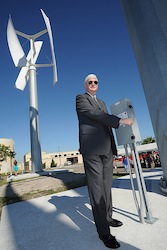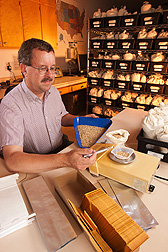The Gas Technology Institute (GTI) is partnering with the Center for Electromechanics at the University of Texas at Austin (UT-CEM) to engineer ways to fuel natural gas vehicles at home. GTI has been focused on making natural gas vehicles more competitive in the marketplace, and last week I brought you the story about how their FuelMule fueled up natural gas buses during both the republican and democratic conventions.
 There are two major barriers to widespread adoption of natural gas vehicles. One is infrastructure and two is cost. With a $4 million grant to develop a cost-effective compressor for at-home natural gas refueling systems, these two issues could become a part of the past. The U.S. Department of Energy (DOE), through its Advanced Research Projects Agency-Energy (ARPA-E), is funding this cutting-edge project. It is part of DOE’s new program, titled Methane Opportunities for Vehicular Energy (MOVE).
There are two major barriers to widespread adoption of natural gas vehicles. One is infrastructure and two is cost. With a $4 million grant to develop a cost-effective compressor for at-home natural gas refueling systems, these two issues could become a part of the past. The U.S. Department of Energy (DOE), through its Advanced Research Projects Agency-Energy (ARPA-E), is funding this cutting-edge project. It is part of DOE’s new program, titled Methane Opportunities for Vehicular Energy (MOVE).
The team will develop a compressor that will use fewer moving parts. The goal is to replace current technology, which comprises multiple pistons and cylinders, with a single cylinder and piston moving through a linear motor. This easier to use system will also be a safer fueling technology. Current technology costs around $4,000 but this new system would cost less than $2,000.
Researchers will also work with Argonne National Laboratory to identify and apply a cost-effective surface coating for the inside wall of the cylinder. “With their help, we look to identify a coating system that will extend the longevity of our one moving part—the component most susceptible to wear and maintenance,” said Tony Lindsay, GTI RD&D Director, who will oversee the project.












